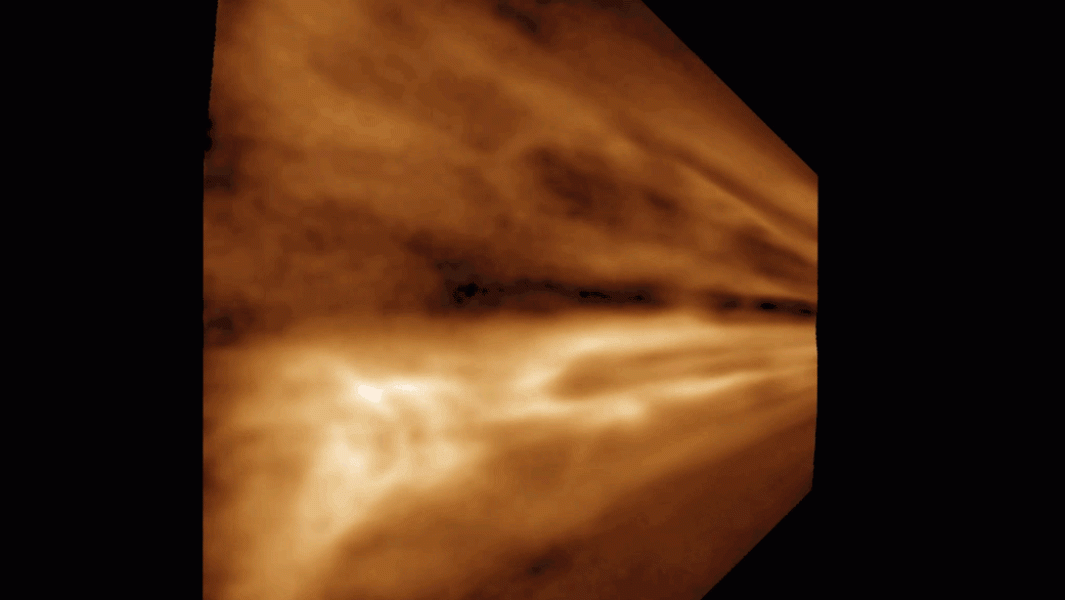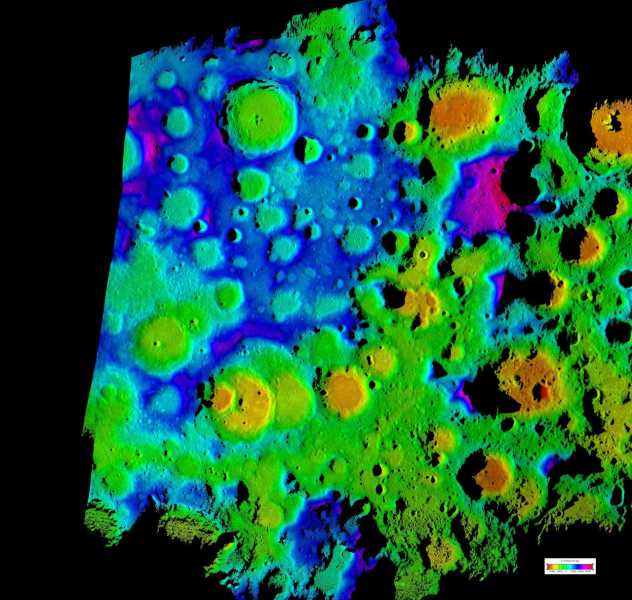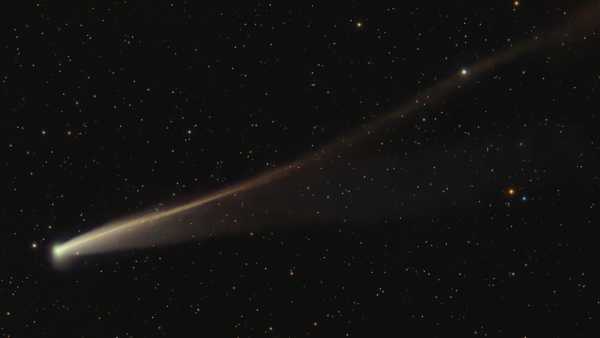
Data from NASA's STEREO mission showing the solar wind in action. The researchers reduced the brightness of stars and dust in the collected data to make the solar wind stand out more clearly. (Image credit: NASA/SwRI/Craig DeForest)
Continuous emissions of particles from the Sun may be helping to form water molecules on the Moon, suggests a new NASA-led study.
Scientists have found traces of water molecules and hydroxyl (OH) molecules, a component of water, on the lunar surface during various space missions. The source of this water has long been a mystery, although some hypotheses point to volcanic activity, the release of gas from deep within the lunar regolith (a mixture of rocks and dust on the surface of the Moon), and the impact of small meteorites.
A new NASA experiment, described March 17 in the journal JGR Planets, explores another hypothesis: that the solar wind may be the culprit.
The solar wind is a constant stream of charged particles blasting out of the sun at speeds of more than 1 million miles per hour (1.6 km/h). It batters every object in the solar system, including Earth, causing colorful auroras when it collides with molecules in our atmosphere. Earth’s magnetosphere shields us from the brunt of this space weather. However, the moon has a very weak and patchy magnetic field, making it less protected.
Water is made up of hydrogen and oxygen atoms. Rocks and dust on the moon's surface contain lots of oxygen, but not much hydrogen. The solar wind is mostly made up of protons, which are hydrogen atoms that have lost their electrons. Without a strong magnetic field to protect it, the solar wind hits the moon's surface every day, saturating it with protons that borrow electrons from the lunar regolith to form the hydrogen needed to create water.

Topographic map of the Moon's south pole. The Moon's north and south poles contain cold regions that never receive sunlight, creating cold traps for water that exists in the form of ice.
According to NASA, the water found on the Moon follows an interesting pattern — it changes on a daily cycle. Areas heated by the Sun release water as vapor, while cooler areas retain it. If micrometeorite impacts were the source of the water, you would expect the water to continue to decrease in warm areas until new impacts occur. However, the amount of water found returns to the same level each day, even though some of it is lost to space. This makes it more likely that the solar wind is involved.
To test this hypothesis, the researchers simulated the impact of solar wind on the moon using lunar regolith samples collected by the Apollo 17 astronauts in 1972. They built a miniature particle accelerator in a vacuum to fire a “simulated solar wind” at the samples for several days, reproducing the impacts of real solar wind over 80,000 years. They then analyzed changes in the sample’s chemical composition, revealing the presence of water, which was previously absent.
“The most exciting thing about this is that, given only lunar soil and the main ingredient, hydrogen, which is constantly being released by the sun, it is possible for water to form,” said lead author Lee Hsiao Yeo, a planetary scientist at NASA's Goddard Space Flight Center, in a statement.
Understanding how water forms on the Moon is important for future lunar missions, researchers say.
Sourse: www.livescience.com





